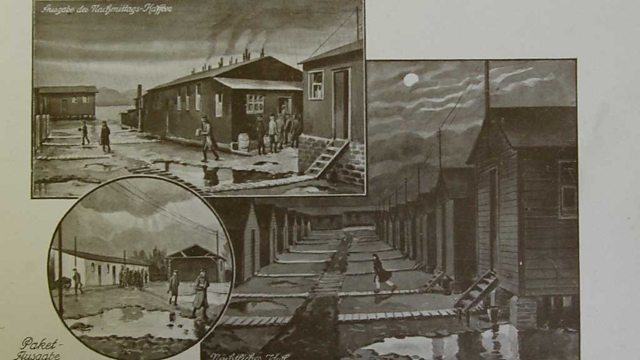Oswestry, Shropshire: A PoW Camp
Despite horsemeat soup and a mouse in their porridge, life at Park Hall wasn’t so bad
It was November 1919 when the last prisoner of war (PoW) left Park Hall Camp for Germany. According to Freidrich Thomas the years of internment hadn’t been so bad.
In his illustrated diary he details some of the privations – for instance in winter; wading through the ankle deep mud to the privy at night, frozen water in the wash house and the lack of acceptable cocoa.
Treatment of the PoWs was governed by the Hague Convention, which ensured their wellbeing.
Whilst rank and file were often used as work parties on the local farms or plantations, the officers tended to keep to their camp, usually making their own entertainment. At Park Hall Officers set up a choir and put on recitals, organised art exhibitions, played football, handball, hockey and tennis and organised a festival of sport. They were also allowed to drink beer and wine and read English newspapers.
There were about 600 officers in E5 camp and probably about 6,000 interned in the whole camp.
Ray Ironmonger was a Company Sergeant Major training Junior Leaders at the camp during the 1960s. He knew about the PoW camp and with help from the illustrations in the diary may have located where it was situated.
Location: Park Hall, Oswestry, Shropshire Sy11 4AS
Image of German officers in the PoW camp in Oswestry
Image on loan to Oswestry Museum courtesy of Mark Hignett
Duration:
This clip is from
Featured in...
![]()
�鶹�� Radio Shropshire—World War One At Home
Places in Shropshire that tell a story of World War One
![]()
War at Home
Refugees, internment, training and protest.
More clips from World War One At Home
-
![]()
The loss of HMY Iolaire
Duration: 18:52
-
![]()
Scotland, Slamannan and the Argylls
Duration: 07:55
-
![]()
Scotland Museum of Edinburgh mourning dress
Duration: 06:17
-
![]()
Scotland Montrose 'GI Brides'
Duration: 06:41








